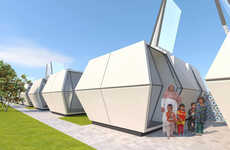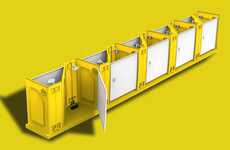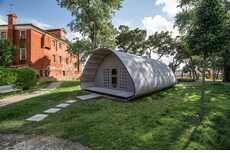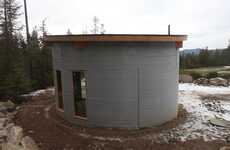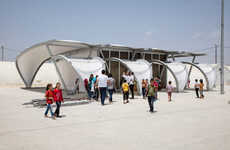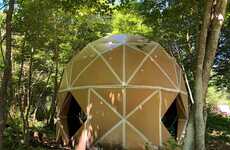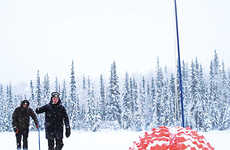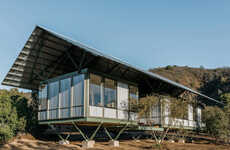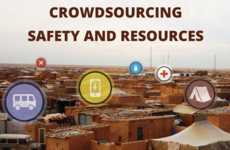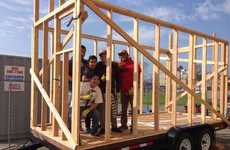
These Flat-Pack Homes Provide a Long-Term Solution for Housing Refugees
Katherine Pendrill — July 31, 2015 — Art & Design
References: youtube & fastcoexist
The UN has started to invest in flat-pack homes as a more sustainable solution for housing refugees. In many parts of the world, refugees live in flimsy canvas tents that are not designed for long-term use. Prefabricated housing is not only more durable, but it is also a more cost-effective solution for refugee camps.
Cameron Sinclair helped to design the flat-pack homes with the help of local building experts and non-profit organizations. The prefabricated structures are called 'RE:BUILD' and they are designed to serve as anything from a home to a small school. The structure consists of a series of metal grids, which can be filled with sand or gravel to provide a natural form of insulation. The roof of the structure features solar panels that can help to provide a source of power for those living inside. The entire structure is easy to set up and can be built by the refugees themselves so that they don't need to wait for humanitarian assistance.
Cameron Sinclair helped to design the flat-pack homes with the help of local building experts and non-profit organizations. The prefabricated structures are called 'RE:BUILD' and they are designed to serve as anything from a home to a small school. The structure consists of a series of metal grids, which can be filled with sand or gravel to provide a natural form of insulation. The roof of the structure features solar panels that can help to provide a source of power for those living inside. The entire structure is easy to set up and can be built by the refugees themselves so that they don't need to wait for humanitarian assistance.
Trend Themes
1. Flat-pack Homes - The use of flat-pack homes provides a more sustainable and cost-effective solution for housing refugees.
2. Prefabricated Housing - Prefabricated housing offers a durable and efficient alternative for long-term refugee camps.
3. Self-construction - Empowering refugees to build their own homes speeds up the process and reduces dependency on humanitarian assistance.
Industry Implications
1. Construction Industry - The construction industry can explore opportunities in manufacturing and supplying flat-pack homes for refugee camps.
2. Renewable Energy Industry - The renewable energy industry can capitalize on the demand for solar panels in prefabricated structures for power generation.
3. Non-profit Sector - Non-profit organizations can partner with local building experts to design and implement sustainable housing solutions for refugees.
4.8
Score
Popularity
Activity
Freshness

